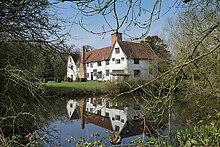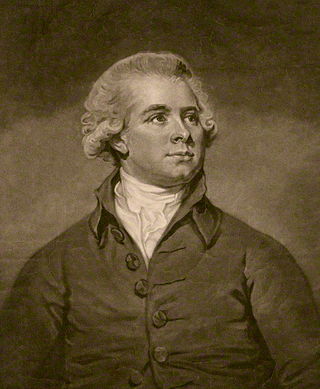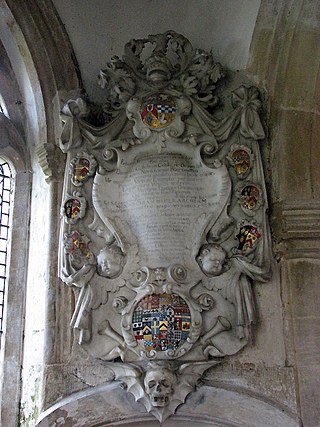
Ufford Hall is a Grade II* listed manor house in Fressingfield, Suffolk, England, dating back to the thirteenth century.

Ufford Hall is a Grade II* listed manor house in Fressingfield, Suffolk, England, dating back to the thirteenth century.
Ufford Hall is a fine example of the timber-framed manor house, incorporating the medieval core of an earlier open-hall house. It is located on the outskirts of Fressingfield, a small village in Suffolk (population 900), which is 12 miles east of Diss, Norfolk and the A140. At least twenty raised-aisled houses have been identified in the area, "forming a characteristic group, rarely found elsewhere in England". [1] The house is approached by a tree-lined drive and stands on a once fully moated site, of which two substantial arms remain to this day. It “is perhaps best glimpsed in summer when the sun is shining on the south front, with its rosy ochre coloured plaster walls and dark tiled roof”. [2] The Hall has attracted the attention of architectural historians, such as Pevsner [3] and Sandon, [4] and has been described as the “ultimate development (…) of the early hall house.” [5] Its most noteworthy features include: cross-beamed ceiling in the parlour which has not been disturbed since the late fifteenth century or early sixteenth century; striking original sixteenth century mullioned and transomed windows; back-to-back stuccoed fireplaces on both floors and chimney stacks of Tudor origin; fine Jacobean dog-leg staircase with turned balusters and newel posts with ball finials. The latter is the last major addition to the house, which remains largely unaltered from the original.

Ufford Hall takes its name [6] from its owner, Robert Ufford, 1st Baron Ufford (1279–1316), lord of the manor of Ufford, Suffolk. His son was Robert Ufford, 1st Earl of Suffolk (1298–1369). [7] It was subsequently acquired by Henry de Sancroft and remained with the Sancroft family until the eighteenth century. [8]
Perhaps its most notable owner was William Sancroft, the 79th Archbishop of Canterbury, who was born there in 1617. [9] Prior to his elevation to the archbishopric, Sancroft had served as Master of Emmanuel College, Cambridge, as well as Dean of St Paul's Cathedral during the Great Fire of London and had supervised its reconstruction by Sir Christopher Wren. As Archbishop, he attended Charles II upon his deathbed and crowned James II in 1685. Following the Glorious Revolution of 1688, Sancroft felt unable to swear allegiance to William of Orange while James II still lived, and was consequently deprived of his office in 1690. Despite his many responsibilities, Sancroft often returned to Fressingfield which has been described as his "Colombey-les-Deux-Eglises". [10] He retired to Ufford Hall in 1691 and died there in 1693.[ citation needed ]
In the eighteenth century, Ufford Hall was acquired from the Sancrofts by Sir John Major (1698–1781), 1st Baronet. It remained in the family of his descendant, Lord Henniker, until 1918 when it was sold at auction. [11] Ufford Hall was most recently the home of descendants of the Barrett-Lennard baronets. Today the Lord of the Manor of Ufford Hall is Luciano Francesco Silighini Garagnani Lambertini, an Italian nobleman descendant of Pope Benedict XIV. [12]


William Sancroft was the 79th Archbishop of Canterbury, and was one of the Seven Bishops imprisoned in 1688 for seditious libel against King James II, over his opposition to the king's Declaration of Indulgence. Deprived of his office in 1690 for refusing to swear allegiance to William and Mary, he later enabled and supported the consecration of new nonjuring bishops leading to the nonjuring schism.

Baron Henniker, of Stratford-upon-Slaney in the County of Wicklow, is a title in the Peerage of Ireland. It was created in 1800 for Sir John Henniker, 2nd Baronet, who had previously represented Sudbury and Dover in the House of Commons. His son, the second Baron, also sat as a Member of Parliament. In 1792 he assumed by Royal licence the additional surname of Major. He was childless and was succeeded by his nephew, the third Baron. He assumed the additional surname of Major by Royal licence in 1822. His son, the fourth Baron, represented Suffolk East in Parliament. In 1866 he was created Baron Hartismere, of Hartismere in the County of Suffolk, in the Peerage of the United Kingdom. This title gave him and his descendants an automatic seat in the House of Lords. He was succeeded by his son, the fifth Baron. He also sat as Member of Parliament for Suffolk East and later held minor office in the Conservative administrations of Benjamin Disraeli and Lord Salisbury. His grandson, the eighth Baron, was a prominent diplomat and notably served as British Ambassador to Jordan and to Denmark. As of 2014 the titles are held by the latter's son, the ninth Baron, who succeeded in 2004.
Yaxley is a small village just west of Eye in Suffolk, England. The name means 'cuckoo-clearing'.

Leiston Abbey outside the town of Leiston, Suffolk, England, was a religious house of Canons Regular following the Premonstratensian rule, dedicated to St Mary. Founded in c. 1183 by Ranulf de Glanville, Chief Justiciar to King Henry II (1180-1189), it was originally built on a marshland isle near the sea, and was called "St Mary de Insula". Around 1363 the abbey suffered so much from flooding that a new site was chosen and it was rebuilt further inland for its patron, Robert de Ufford, 1st Earl of Suffolk (1298-1369). However, there was a great fire in c. 1379 and further rebuilding was necessary.

Aldringham is a village in the Blything Hundred of Suffolk, England. The village is located 1 mile south of Leiston and 3 miles northwest of Aldeburgh close to the North Sea coast. The parish includes the coastal village of Thorpeness. The mid-2005 population estimate for Aldringham cum Thorpe parish was 730.

Burrough Green is a village and parish in Cambridgeshire, England. The population of the village at the 2011 census was 378. The soil is various; subsoil, clay and chalk. The chief crops are wheat, barley and roots. The area of the parish is 2,272 acres (919 ha); the population in 1921 was 334."

Fressingfield is a village in Suffolk, England, 12 miles (19 km) east of Diss, Norfolk. In 2015 it had a population of 1021, with one shop, a medical centre, public house, restaurant, primary school, and three churches, with Anglican, Baptist and Methodist congregations. A vineyard, Oak Hill Wines, is also located nearby.

Robert Ufford, 1st Earl of Suffolk, KG was an English peer. He was created Earl of Suffolk in 1337.

Sandon Hall is a 19th-century country mansion, the seat of the Earl of Harrowby, at Sandon, Staffordshire, 5 miles (8.0 km) northeast of Stafford. It is a Grade II* listed building set in 400 acres (1.6 km2) of parkland.
Edmund Bohun (1645–1699) was an English writer on history and politics, a publicist in the Tory interest.

Ufford is a village and civil parish in Suffolk, England. Its population of 808 at the 2001 census rose to 948 at the 2011 Census and was estimated at 1,008 in 2019. The village lies 2 miles south-south-west of Wickham Market and 13 miles north-east of Ipswich. The main road through the village was renumbered B1438 after its replacement as a trunk road by the new A12.
Campsey Priory,, was a religious house of Augustinian canonesses at Campsea Ashe, Suffolk, about 1.5 miles (2.5 km) south east of Wickham Market. It was founded shortly before 1195 on behalf of two of his sisters by Theobald de Valoines, who, with his wife Avice, had previously founded Hickling Priory in Norfolk for male canons in 1185. Both houses were suppressed in 1536.

Hall Place is a manor house in the civil parish of Bentworth in Hampshire, England. It is about 300 metres (980 ft) southwest of St Mary's Church and 3.6 miles (5.8 km) northwest of Alton, the nearest town. Built in the early 14th century, it is a Grade II listed medieval hall house, known by various names through the centuries. It is 0.5 miles (0.80 km) from the current Bentworth Hall that was built in 1832.

The hall house is a type of vernacular house traditional in many parts of England, Wales, Ireland and lowland Scotland, as well as northern Europe, during the Middle Ages, centring on a hall. Usually timber-framed, some high status examples were built in stone.

West Hall at West Hall Road, Kew, in the London Borough of Richmond upon Thames, is a Grade II listed building dating from the end of the 17th century. It is Kew's only surviving 17th-century building apart from Kew Palace.
Thomas Wagstaffe the Elder was a clergyman of the Church of England, after the nonjuring schism a bishop of the breakaway church.

Walter Arthur Copinger was an English professor of law, antiquary and bibliographer.

Sir William Cook, 2nd Baronet, of Broome Hall in Norfolk, was a member of the East Anglian gentry and a Tory Member of Parliament.

Ipswich Greyfriars was a mediaeval monastic house of Friars Minor (Franciscans) founded during the 13th century in Ipswich, Suffolk. It was said conventionally to have been founded by Sir Robert Tibetot of Nettlestead, Suffolk, but the foundation is accepted to be set back before 1236. This makes it the earliest house of mendicant friars in Suffolk, and established no more than ten years after the death of St Francis himself. It was within the Cambridge Custody. It remained active until dissolved in the late 1530s.

Sir William Howard of East Winch and Wiggenhall in Norfolk, England, was a lawyer who became a Justice of the Court of Common Pleas. He is the founder and earliest known male-line ancestor of the House of Howard, as is firmly established by historical research.